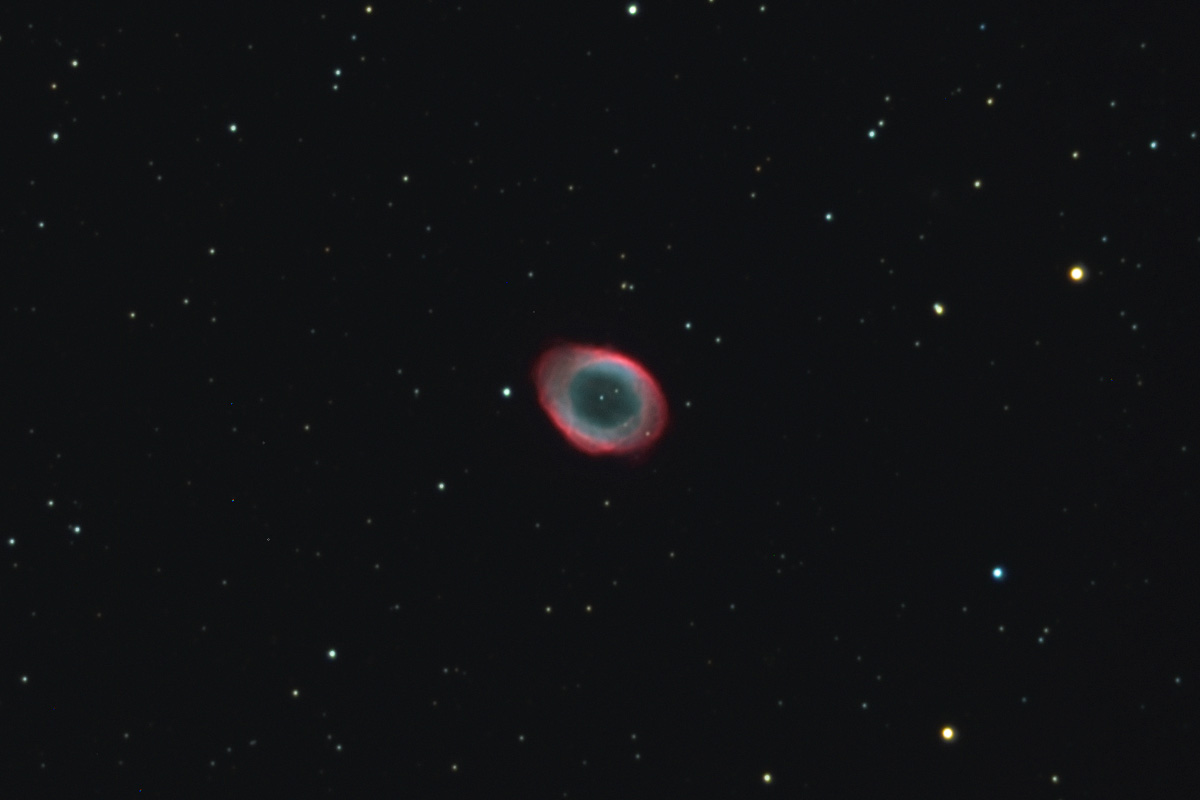
M57, The Ring Nebula
- Telescope:
Celestron C11 Schmidt-Cassegrain,
11" f/10
- AstroPhysics
900GTO German equatorial mount
- Santa
Barbara Instrument Group ST-8E NABG CCD camera (1530 x 1020 pixels, 9 x 9mm, monochromatic, 16 bit, 13.8 x 9.2mm array)
- CWF8
color filter wheel with Ha and IR-blocking red, green and blue dichroic filters
Exposure Information
- Date:
Thursday June 27/28, 2003
- Location:
Mt. Pinos, CA
- Elevation:
Approx. 8300', OAT +45F. RH=55%
- CCD
operating temperature: -20C
- Composition:
LRGB 140:50:50:70 minutes
- All
subexposures were 10 minutes unbinned
- Plate
scale: 0.7 arc-sec/pixel
- Raw
FWHM: 3.6 to 4.0 arcseconds
About
This Image
M57,
the Ring Nebula, is a planetary nebula lying in the constellation Lyra. This expanding shell of fluorescing gas is about one
light year across and is expanding at 20 to 30km/s. It subtends an angle of
about one arcminute and lies at a distance of about
2300 LY based on a trigonometric parallax measurement of the central star.
Planetary
nebulae are formed when Sun-like stars come to the end of their nuclear fusion
lives. After exhausting the last of the hydrogen gas supply in their cores,
swollen red giant stars cast off their outer layers during short-lived fusion
events wherein heavier elements undergo brief, violent fusion reactions. The
cast off shells of gas creates these glowing nebulae. The cores of the progenitor
stars remain intact as dense, super-hot white dwarf stars with surface
temperatures of 50,000 to 120,000K; many times hotter than the Sun's 5800K
surface temperature. No nuclear reactions continue to generate heat in the
white dwarf stars so they eventually cool. But for a while, the high surface
temperatures produce intense ultraviolet radiation causing the cast off gasses
to fluoresce. Spectroscopic analysis of the light from these nebulae reveals
information about the abundance of gasses that constituted the original stars.
The
white dwarf star in M57 is clearly visible in this image, lying at the center
of the planetary nebula. Its blue color is a result of its very high surface temperature.
This
image spans about 10 by 15 arcminutes of sky. For
comparison, the full moon spans about 30 arcminutes.
More
information about planetary nebulae can be found at APOD.